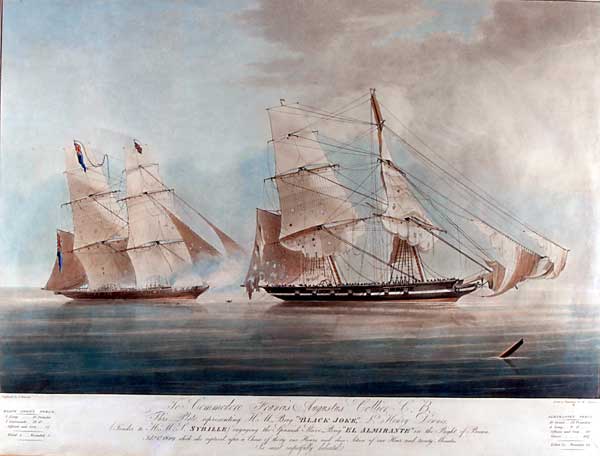On Wednesday, the crew of the icebreaker HMS Protector paid their respects to the thousands of Royal Navy sailors who helped put an end to the West African slave trade. They joined leaders of the island of St. Helena in a service of remembrance and thanks for the men of the West Africa Squadron – and the tens of thousands of slaves they liberated.
For more than half a century, the tiny island of St. Helena was the hub of the fight against slavers in the transatlantic trade. Under the Slave Trade Act of 1807, Royal Navy warships were empowered to board British-flagged vessels suspected of engaging in the slave trade. If the Royal Navy found slaves on board, it could impose a fine of £100 per enslaved person, payable by the captain. A series of treaties with other European powers expanded the number of slave ships that the Royal Navy could board, and the British created a system of admiralty courts in West African ports to administer punishment.
The challenges that the West Africa Squadron faced were stark: just a handful of small Royal Navy sailing ships had 3,000 miles of West African coastline to monitor, and they were up against armed, motivated and unscrupulous slavers. Often enough, interdictions would turn into naval battles. Among the losses was the ten-gun sloop HMS Waterwitch, which spent 21 years hunting down slave ships until one sank her in 1861.

The captured slave ship-turned-warship HMS Black Joke attacks the Spanish slave ship El Almirante off West Africa (Nicholas Matthews Condy)
The cost to the Royal Navy was heavy: tropical diseases like malaria and yellow fever exacted a terrible toll on servicemembers, and about 1,600 British sailors died over the course of the five-decade campaign. It was also incredibly costly from a financial standpoint, absorbing up to half of the UK’s naval budget and up to two percent of all government expenditures at its peak.
From 1808 to 1863, the squadron seized about 1,600 ships and rescued an estimated 150,000-200,000 people from slavery. Though this represented just a tiny fraction of the estimated 3.2 million West Africans who were captured, enslaved and exported for profit over the same period, it was by far the most significant human-rights action at sea during the 19th century – and perhaps of all time.